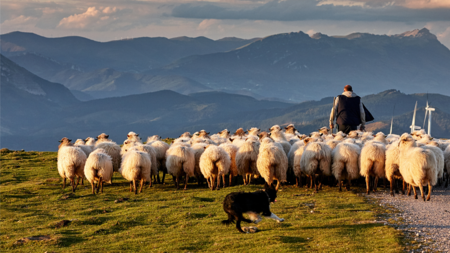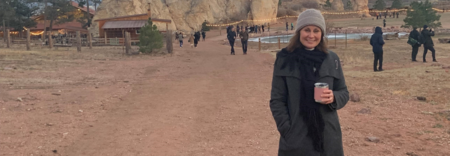Apparel & textiles
Interweaving nature and business
Nature, including its living biodiversity and dynamic landscapes, is at the beginning of all our clothing and textile products. From the arid and semi-arid biomes where cotton is cultivated, to the pastures and rangelands where cattle, sheep, goats, alpaca, and yak are farmed or herded, and into the tropical and temperate climates where forests are at the base of our viscose and other manmade cellulosic textiles, nature is the provider. Even our polyester and other synthetic materials originate from nature’s once-living, now fossilized plant and other organism deposits.
And as we turn to the circular economy, the feedstocks for recycled materials are sometimes derived from the byproducts of crops, such as straw or stover, as well as from waste such as plastic bottles or discarded clothes. Even innovative materials that originate in the labs, such as spider silk, are often biobased and depend upon nature for their cellular structures or to copy its functionality (biomimicry).
The textile industry relies on nature and ecosystem services. It can also have a significant impact on the functioning of nature through extractive and inequitable production and business models. As the impact of climate change increases, and water and other natural resources are depleted, the risks to business – in the shape of feedstock security, quality, and reliability - also increase. This ‘double materiality’ means companies are causing and being hurt by biodiversity loss and nature degradation. But it doesn’t have to be that way.
The Biodiversity Consultancy works with industry stakeholders, from brands and retailers to suppliers and manufacturers, from standard owners to sector initiatives and non-profits. We help organisations define and quantify the risk, prioritize action to reduce their negative impact on nature and increase their positive impact.
As biodiversity experts, The Biodiversity Consultancy understands what is at stake for the world and what is at stake for us as a business. They’re really good at striking the right balance and very pragmatic from a business perspective. They’re helping us push our nature work as something important internally.
Anders Saxbol, Raw Material Sustainability Manager, Ferrero Group
Tailored to fit
We begin by getting to know our clients and their starting point so we can plan a nature positive journey together. Importantly, we are a blended team of industry and biodiversity experts, and translating science to actionable business strategy is our priority.
Our services range from blue sky visioning and workshopping to strategy development, quantitative materiality assessments and biodiversity assessments, through to target-setting aligned with the Science Based Targets for Nature (SBTN), action planning and implementation, and disclosures and reporting following the best practices established by the Taskforce for Nature-related Financial Disclosure (TNFD).
With our breadth and depth of expertise and experience we help companies meet requirements for due-diligence and disclosure, and get ready to meet emerging regulatory requirements.
Better decisions
Our work with upstream producers, industry bodies, high end and high street brands enables good biodiversity management and decision-making across the value chain. In turn, this empowers companies to:
- Develop strategy and build action plans.
- Ensure approaches involve and respect rightsholders and stakeholders, most importantly indigenous peoples and local communities.
- Adapt approaches based on value chain data availability.
- Identify key risk factors for nature and risks to business to inform materiality assessments.
- Quantify biodiversity footprints.
- Set appropriate and feasible targets.
Discover opportunities to contribute to a nature positive world.
Industry briefing note

The world has woken up in the past 18 months to a Nature Crisis as large as the Climate Emergency. We explore why nature is on trend in 2020 and what the apparel sector can do to make their mark. Our first Insight piece looks at...



